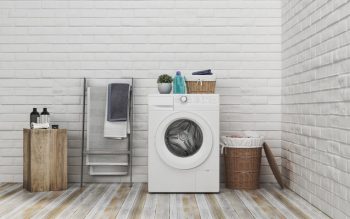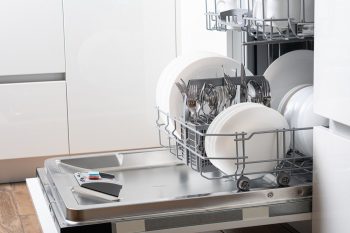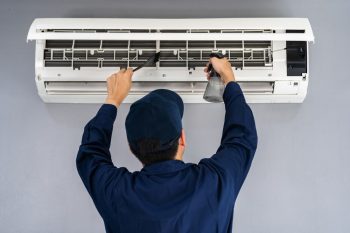
Your washing machine uses a variety of parts and components to guarantee safe, efficient, quiet operations. But now and then, some parts can fail to cause malfunction and potentially dangerous washer performance.
Among the many different parts of your washing machine, suspension rods are some of the most important. Playing a vital role in stability, suspension rods can produce several problems if damaged or broken.
But what exactly are the signs of a damaged suspension rod? Here’s how to tell.
- Suspension rods work like bungee cords that support the weight and movement of the washer tub.
- When they’re broken, your washer could vibrate, shake, and make more noise than it typically does.
- You might be able to fix a broken suspension rod on your own, but it’s recommended that you ask for the help of a professional.
Washing machines typically have four suspension rods. These tiny wires extend from just under the tub’s lip to the washer’s base.
Equipped with springs, suspension rods make the washing machine’s movements smooth. They also dampen any bouncing, so your washing machine performs efficiently and quietly during a cycle.
Signs That Your Washer’s Suspension Rods Are Damaged

Suspension rods are made from a thin wire material with suspension balls and a spring. You can think of them like miniature bungee cables. They aim to support the tub’s weight as it turns and spins.
This dampens any sudden, jarring movements to produce smooth, silent functioning.
So naturally, when these suspension rods are damaged, you can expect the following:
- Loud, thudding noises during washer operation.
- It sounds suggest that the tub is hitting the walls of the washer housing.
- Excessive vibration.
- The washer runs into ‘unbalanced’ error, forcing it to stop the cycle or to fill the tub with water.
How To Fix a Broken Washer Suspension Rod

Replacing the rods entails removing the panels that form the housing and exposing the washer’s tub.
Then it’s a matter of lifting the tub to relieve tension on the broken rod and unlatching it from its placement. You can then add the new rod by stretching it and securing it from end to end.
If a warranty still covers your washing machine, tinkering with its inner workings could void your coverage.
Using a replacement rod that isn’t from the same manufacturer may also do the same. Unless you are confident in your ability to repair a washing machine, you might want to consider having it serviced instead.
Takeaway
A broken or damaged suspension rod can make your washing machine noisy, inefficient, and dangerous. So if you suspect that it’s broken, make sure you act fast.
Replacing that suspension rod as soon as possible can prevent further damage to your washer and restore proper, efficient, silent performance.
Frequently Asked Questions
What Happens if You Don’t Replace a Broken Suspension Rod in a Washer?
Suspension rods do more than dampen sound. They prevent the tub from constantly hitting and banging against the interior of the washer’s housing.
With a broken rod left in place and unresolved, the tub could cause internal damage to the other parts of the appliance. Over time, you can expect the damage to worsen and your washer to break down entirely.
How Often Should You Get Your Washing Machine Maintained?
Because of the rugged function of a washing machine, it’s much more prone to damage compared to all of the other appliances you have at home.
Constant exposure to moisture also makes it especially prone to water damage, deterioration, mold, and mildew. So experts recommend checking and maintaining it every month to prevent wear and tear.












